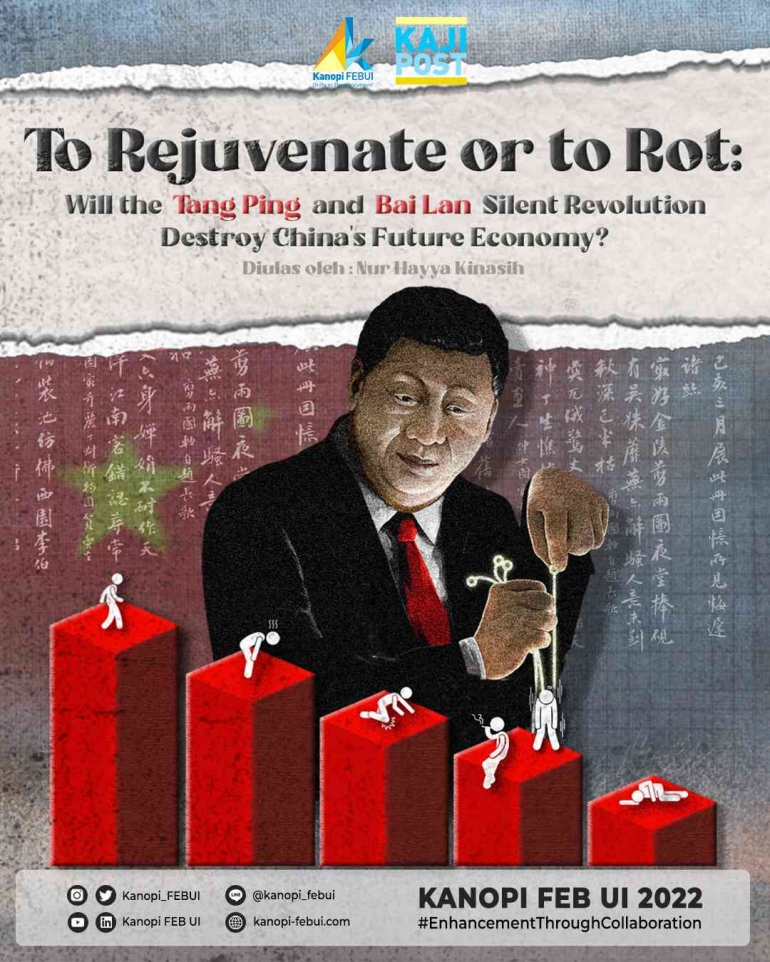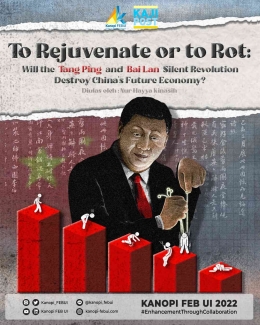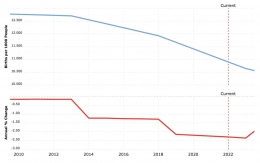"Working hard is not worth it. No matter how hard one works, one can't afford to buy a home. No matter how long one works, one can't get a promotion. So just lie down and let it rot."
- CNA Insider
Over the past 40 years, China has undertaken a series of groundbreaking market reforms, opening up trade routes and investment flows, ultimately lifting approximately 800 million people out of poverty. The country became the world's 'economic miracle' as the fortunes of hundreds of millions of Chinese people improved. Simultaneously, education rates have risen. Standard Chartered predicts that around 27% of China's workforce will have a university education by 2030. But, even 'miracles' like the Great Pyramid of Giza could soar high as Egyptian workers traded off their deformed bones and broken limbs in exchange for that miracle to happen.
In this case, the sustained increase of productivity in Chinese workers has been one of the driving forces behind the economic boom. Subsequently, Chinese youths are growing crestfallen with work and life. They are protesting against a hyper-competitive work culture, widespread overwork, and soaring social pressure. Some chose to ignore the dictates of society and break free from the hustle culture as they face challenges, ranging from a great rise in unemployment rate to layoffs and a failing economy. The frustration of these youths stems from worker exploitation that has long been rooted in China's culture that sees overwork and sacrifice as virtues.
Moreover, this hypercompetitive overwork system is supported by industry leaders resulting in an imbalanced power dynamic between companies and employees, ultimately forcing employees to adopt this lifestyle. Cast down by the weight, tang ping (lying flat, ) and bai lan (let it rot, ) are the attitudes that the young crowd is opting for. Tang ping is a harmless choice to strive for solely things that are essential for survival. But the phrase bai lan, refers to a stance of downright giving up. Will these movements harm China's economic growth? And how detrimental will it be?
The Movements' Emergence: Why China's '996' Work Culture Might Be the Scapegoat
The term "tang ping" first appeared in April, 2021 when young internet users started conversing about their professional lives. They have synthesized the notion of tang ping with a theory developed by American anthropologist Clifford Geertz, referred to as "involution". This stresses the absurdity of ever-increasing and vain competition. Thus arises from the ashes of this burnt-out hope, appears bai lan.
A generation ago, to work hard, get married, and have children were not only general requirements for success, but are also ideals set by the Chinese government for its citizens. China's authoritarianism towards the people was seen as a trade-off as millions were liberated out of poverty. Employees regularly work overtime and are not always compensated in many of the country's biggest firms. In 1919, the International Labor Organization established the principle of a 40-hour week with a maximum of 8 hours a day as an international standard. This standard, however, was not fulfilled in China.
The guideline on working hours has been inch by inch replaced by the "996" working hour system, meaning employees work from 9 am to 9 pm, six days a week (Wang, J. J., 2020). Employees are powerless to combat this system, as giant companies have strong bargaining power to enforce this. Also, the government is not ready to encounter consequences such as affected economic growth due to enforcing strict labor protection laws. Whereas, the "996" system was declared illegal in August 2021 by the Supreme People's Court.
Chinese workers have fallen prey to this inhumane work culture. Recently in 2021, an Alibaba courier set himself on fire in protest over unpaid wages. A year later, a 25-year-old man who had worked through a week-long public holiday at the video platform Bilibili reportedly died from brain hemorrhage. With complaints rising among workers, some are calling to arm collective action.
This discontent towards China's overwork culture has also reached to a point where there is a recorded 131 cases of food delivery worker protests between 2016 and 2021, according to Hong Kong-based NGO China Labour Bulletin.. As the outlook of many young Chinese have altered, a shift towards better labor protection also comes. These phenomena have resulted in a growing sense of discontentment among youth who see little incentive in working one's fingers to the bone, disparate from their parents who believed that hard work pays off.
Declining Fertility Rate: China's Population Hits a Slump
Both the 996 system and the tang bing and bai lan movement may have a considerable effect on China's fertility rate. In 2021, China's fertility rate stood at 1.16, far below the 2.1 set by Organisation for Economic Co-operation and Development (OECD) as the standard for a stable population. It was among the lowest in the world, along with the inclination among Chinese women to have children, based on a survey by think-tank YuWa Population Research. Low wages and notoriously long working hours need to be addressed as it is able to restrain the young people of China to get married, let alone have kids.
As a matter of fact, a number lower than 2.1 indicates population decline in China. China is now in the midst of its weakest population growth for decades, despite having unbound its one-child per couple policy in 2014 in favor of a three-child policy in 2021. Research examining fertility across multiple industrialized countries has also shown a link between economic and fertility declines (Sobotka et al. 2011; Goldstein et al. 2009). Lower birth rates are associated with less growth and a more rapidly aging population and, hence, slower economic expansion. As a result of tang ping and bai lan movements, Chinese youths are wandering outside the marriage hall and this can negatively impact China's economy.
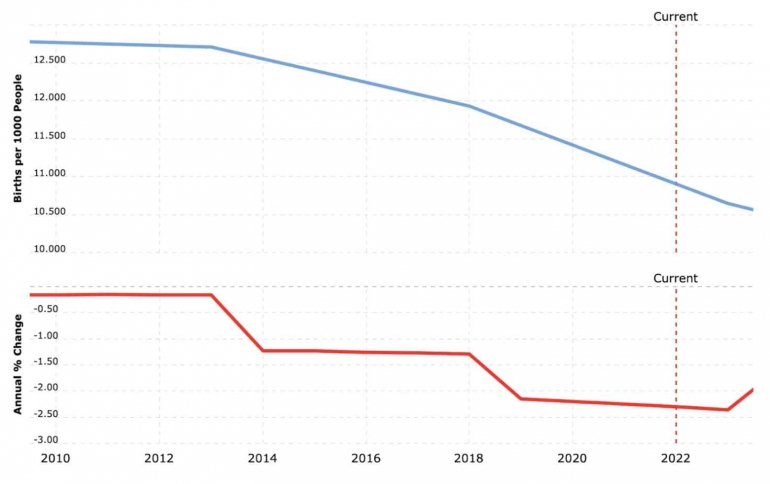
Rise in Unemployment Rate: The Youngsters are Jobless
The anti-hustle mentality of tang ping evolved into bai lan where young people of China leave any possibility of hope behind. They refuse to penetrate into the job market competition, particularly those who were underemployed during the pandemic because they must compete with the flood of new graduates.

Unemployment in economies is considered an essential determinant of economic development. China's unemployment rate had risen to 6.1 percent in April 2022, and the quarterly unemployment rate in China stood at 5.4 percent in the third quarter of 2022 This increase of unemployment may be partly attributed to the anti-work mentality of bai lan. The cost of the higher unemployment is lost wages and incomes to Chinese workers and their families, a further widening of inequalities, resulting in an inhospitable environment for welfare reform.
Retail Sales Plummet: Consumers Not Showing Resilience
The lockdowns and widespread promotions of tang ping and bai lan is a deadly combination that demolishes China's consumption rate. Chinese youths being unemployed have suffered from low income which also pulled back their spending. This will lead to a rapid decline in China's consumption growth. As consumer spending drops off, economic growth slows, leading to price drops and eventually deflation. Low retail sales and consumer spending also take part in the decline of China's productivity rate. When production rate exceeds consumption rate, firms that produce traditional manufacturing goods and firms from emerging industries begin to cut down on production, causing prices to plummet, which further drives firms' revenue to go down and lowering wages across the board. As consumer spending is the leading indicator of the pulse of an economy, even a small downturn in consumer spending could potentially damage China's economy.
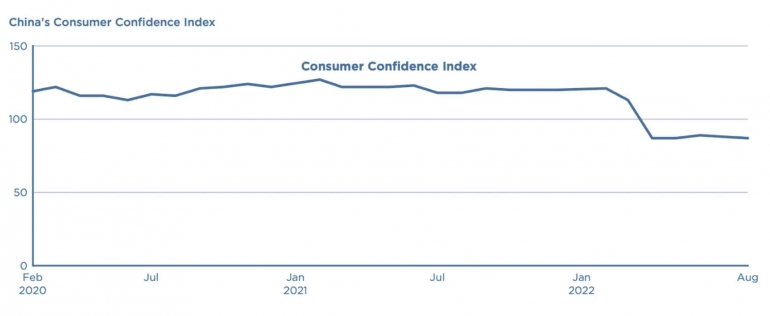
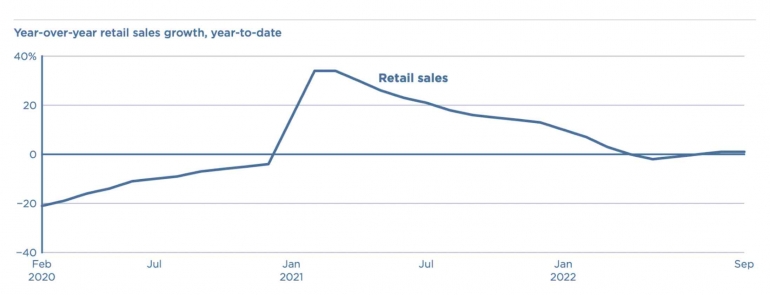
Labor Productivity Slowdown: A Potential Growth Crisis
Since tang ping and bai lan are antidotes to society's strain on finding jobs and performing well while working, China's productivity rate is directly affected. Compared to other developed economies such as the United States, the European Union, and Japan, China's labor productivity is already relatively low. It is producing an output of 7,318 USD per worker, below the world's average margin of 18,487 USD per worker and drastically lower than the United States 98,990 USD per worker, which was only 7.4% of US's productivity (CEIC Data, 2018).
If these movements continue, reversing the recent productivity slowdown should be an urgent priority for China since robust productivity remains the fuel for a healthy economy and broad-based prosperity. Low productivity means lower output, which will ultimately make it difficult for laborers to raise their wages, hence the decelerating wage growth. Farther than that, low labor productivity could hinder the country's economy to grow faster than the workforces, thereby stunting GDP growth.
So, Are Tang ping and Bai Lan Detrimental to the Economic Superpower?
Tang ping and bai lan precisely attack the very core of Xi Jinping's "Chinese Dream" ideology, which he described as the "Great Rejuvenation of the Chinese Nation". Only by promoting common prosperity, increasing average wage, and improving human capital can China increase overall productivity and integrate the foundations for high-quality development, in order for the "Chinese Dream" to come to reality and for the country to become "rejuvenated". But Chinese youths won't walk the talk. As demonstrated, tang ping and bai lan have negatively affected young people's judgements and behavior toward productivity, marriage, employment, and even consumption. The economic superpower is currently at a crossroad of becoming a high-income economy or finding itself tumbling in the middle-income trap. These movements are detrimental to China's economy where growth might stagnate and incomes stall. If Chinese youths continue living by these slacker cultures, then there will not be a rise in overall national income and China will stay where it is: a middle-income zone, rotting. Tang ping and bai lan, which is peaking in terms of its popularity --beyond any doubt -- has a significant role to play. So, to supporters of these movements, would you still lie down and let your country rot?
Nur Hayya Kinasih | Economics 2022 | Trainee of Kanopi FEB UI Studies Division 2022/2023
References
Brandt, Loren; Litwack, John; Mileva, Elitza; Wang, Luhang; Zhang, Yifan; Zhao, Luan. 2020. China's Productivity Slowdown and Future Growth Potential. Policy Research Working Paper;No. 9298. World Bank, Washington, DC. World Bank. https://openknowledge.worldbank.org/handle/10986/33993 License: CC BY 3.0 IGO.
CEIC Data (2022). China Unemployment Rate. Ceic Data. Retrieved November 29, 2022, from https://www.ceicdata.com/en/indicator/china/unemployment-rate
Davidson, H. (2022, February 9). Claims that overwork killed China tech worker reignites '996' debate. The Guardian. Retrieved November 29, 2022, from https://www.theguardian.com/world/2022/feb/09/claims-that-overwork-killed-china-tech-worker-reignites-996-debate
Harrison, V., & Palumbo, D. (2019, October 1). China anniversary: How the country became the world's 'economic miracle'. bbc. https://www.bbc.com/news/business-49806247
Hu, Z., & Khan, M. S. (1997). Why Is China Growing So Fast? International Monetary Fund, (8). https://www.imf.org/EXTERNAL/PUBS/FT/ISSUES8/INDEX.HTM
Livingston, G. (2011, October 12). In a Down Economy, Fewer Births. Pew Research Center. Retrieved November 29, 2022, from https://www.pewresearch.org/social-trends/2011/10/12/in-a-down-economy-fewer-births/
Lovely, M. E., & T. H. (2022, November 24). China has few options to revive lagging economic growth. Peterson Institute for International Economics. https://www.piie.com/blogs/realtime-economics/china-has-few-options-revive-lagging-economic-growth
Manyika, J., Woetzel, J., Remes, J., Mischke, J., & Krishnan, M. (2018). McKinsey. Retrieved December 2, 2022, from https://www.mckinsey.com/featured-insights/regions-in-focus/solving-the-productivity-puzzle/pt-br
National Bureau of Statistics of China (2022). Total Retail Sales of Consumer Goods in the First Ten Months of 2022. National Bureau of Statistics of China. http://www.stats.gov.cn/english/PressRelease/202211/t20221116_1890351.html
PricewaterhouseCoopers (2022). Charting New Paths to Sustainable Growth in the Next Retail Evolution. 2022 Global Consumer Insights Survey China Report. https://www.pwccn.com/en/retail-and-consumer/publications/2022-global-consumer-insights-survey-china-report-aug2022.pdf
The World Bank (2022). Four Decades of Poverty Reduction in China: Drivers, Insights for the World, and the Way Ahead. World Bank Group Development Research Center of the State Council, The People's Republic of China. https://thedocs.worldbank.org/en/doc/bdadc16a4f5c1c88a839c0f905cde802-0070012022/original/Poverty-Synthesis-Report-final.pdf
Wang, J. J. (2020). How managers use culture and controls to impose a '996' work regime in China that constitutes modern slavery. The Accounting and Finance Association of Australia and New Zealand, 60(4). https://doi.org/23







